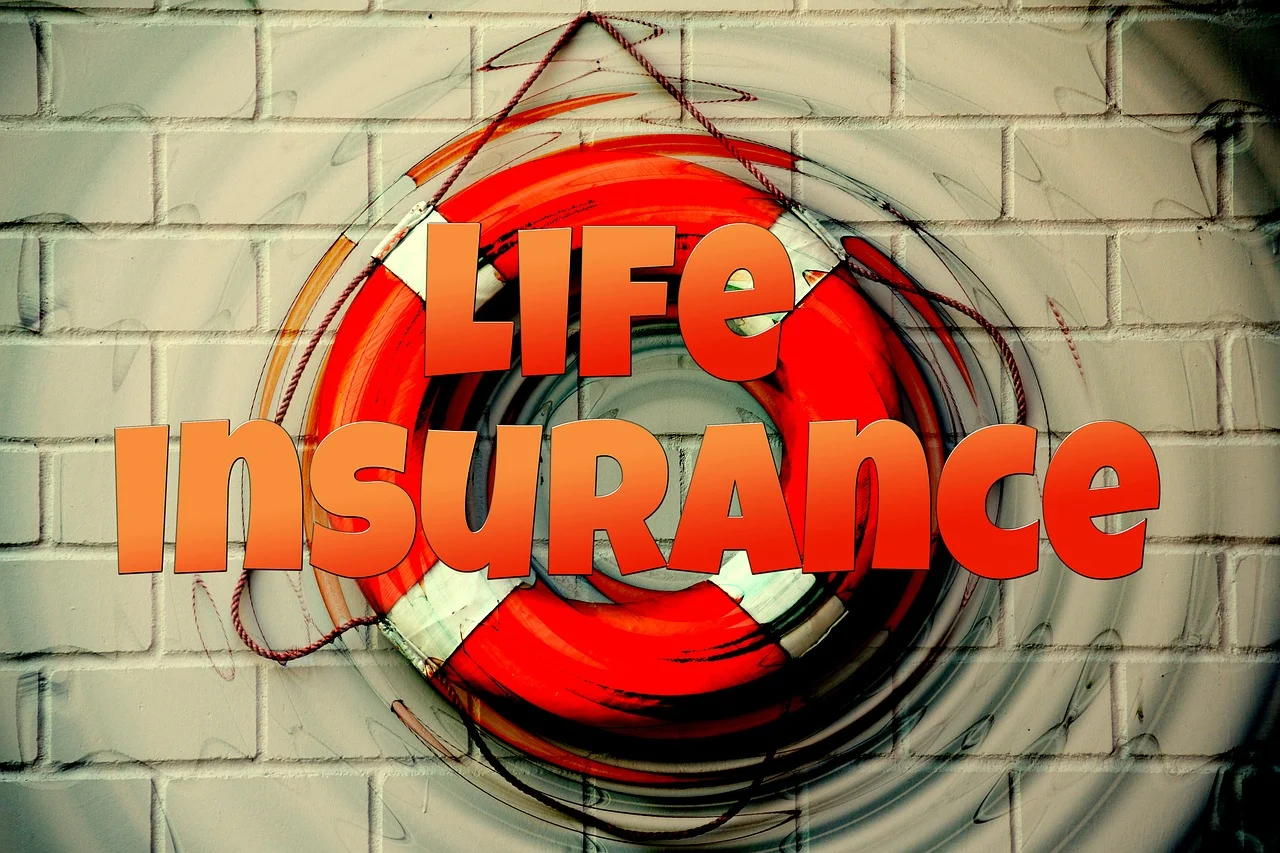Life Insurance Policy: A Comprehensive Guide

Life insurance is one of the most critical financial products that provide financial security for your family and loved ones after your death. A life insurance policy helps protect your beneficiaries from financial hardship by providing a lump sum payment (the death benefit) upon your passing. However, understanding life insurance policies, how they work, and how to choose the right one can be overwhelming, especially given the different types of life insurance and the many factors involved in selecting a policy.
In this comprehensive guide, we will explore what life insurance is, the various types of life insurance policies, factors to consider when choosing a policy, and common mistakes to avoid. This guide also includes a detailed table to help you understand the differences between the most common types of life insurance policies.
What is a Life Insurance Policy?
A life insurance policy is a contract between an individual and an insurance company. The individual (policyholder) agrees to pay premiums regularly in exchange for the insurer’s promise to pay a sum of money (the death benefit) to the designated beneficiaries in the event of the policyholder’s death. This payment can provide financial support to dependents and loved ones after the policyholder’s death, helping to cover expenses like funeral costs, mortgage payments, child education, and living expenses.

Life insurance is an essential tool for ensuring your family’s financial future is protected, especially if you are the primary breadwinner or have dependents who rely on your income.
Types of Life Insurance Policies
Life insurance policies come in several types, each with different features, costs, and benefits. The two main categories of life insurance are term life insurance and permanent life insurance. Within these categories, there are several variations.
Here is a breakdown of the main types of life insurance policies:
| Type of Life Insurance | Description | Best for |
|---|---|---|
| Term Life Insurance | Provides coverage for a specific period (e.g., 10, 20, 30 years). If the policyholder dies during the term, the beneficiaries receive the death benefit. | People seeking affordable coverage for a set period. |
| Whole Life Insurance | A form of permanent life insurance that provides coverage for the policyholder’s entire life, as long as premiums are paid. Includes a cash value component. | Individuals seeking lifelong coverage with a savings component. |
| Universal Life Insurance | A flexible permanent life insurance policy with adjustable premiums and death benefits. It also accumulates cash value based on interest rates. | People who want flexibility and lifelong coverage. |
| Variable Life Insurance | A permanent life insurance policy that allows the policyholder to invest the cash value in various investment options, such as stocks or bonds. | Those willing to take on investment risk to grow their cash value. |
| Indexed Universal Life Insurance | A permanent life policy that offers flexibility in premium payments and benefits, with cash value linked to a stock market index. | Individuals seeking a balance of life insurance and market-based growth. |
Each of these types of life insurance offers unique features that suit different financial goals and risk profiles. To select the right policy, you need to consider factors like the length of coverage, premium affordability, investment options, and your long-term financial goals.
How Life Insurance Works
When you purchase a life insurance policy, you commit to paying regular premiums (monthly, quarterly, or annually) to the insurer. In exchange, the insurer promises to pay a death benefit to your beneficiaries upon your death. The death benefit can be used by your beneficiaries to cover a variety of expenses, including funeral costs, mortgage payments, education, and general living expenses.
The premiums you pay are influenced by several factors, such as your age, health, lifestyle, and the amount of coverage you need. In the case of permanent life insurance, part of your premium goes into a cash value account, which accumulates over time. You can borrow against or withdraw from this account in some cases.
Here’s how the life insurance process generally works:
- Purchase: You apply for a life insurance policy, providing information about your health, lifestyle, and financial needs. The insurer may require a medical exam.
- Premium Payments: You begin paying premiums according to the policy’s schedule.
- Death Benefit: Upon your death, the insurer pays the agreed-upon death benefit to your beneficiaries, provided premiums were up to date.
- Cash Value: In the case of permanent life insurance, your policy accumulates cash value that you can access during your lifetime, though accessing it may reduce the death benefit.
Factors to Consider When Choosing a Life Insurance Policy
Choosing the right life insurance policy requires careful thought and consideration of several factors. Below are the most important aspects to think about when evaluating your options:
- Coverage Amount: Determine how much coverage you need based on your financial obligations, such as mortgages, child education, or other debts. A general rule of thumb is to have a policy worth 10 to 15 times your annual income.
- Premium Affordability: Life insurance premiums vary greatly, and it’s essential to choose a policy you can afford. While term life insurance is usually cheaper, permanent policies tend to have higher premiums due to their long-term coverage and cash value components.
- Policy Term: If you choose term life insurance, you’ll need to decide how long you want the policy to last (e.g., 10, 20, or 30 years). This should align with your financial responsibilities, such as the duration of your mortgage or children’s educational needs.
- Health Conditions: Your health will affect the premiums you pay. Insurers typically charge higher premiums for individuals with pre-existing medical conditions or risky lifestyles.
- Flexibility: Permanent life insurance offers flexibility in premium payments and coverage options. If you anticipate a change in income or life circumstances, this type of policy may suit you better.
- Cash Value: If you’re interested in building savings, consider permanent policies with a cash value component. The cash value grows over time and can be used as a loan or withdrawn during your lifetime.
- Beneficiary Designations: Clearly define who your beneficiaries will be and ensure they are updated as life circumstances change. You can designate multiple beneficiaries and specify how the death benefit should be distributed.
Benefits of Life Insurance Policies
A life insurance policy offers several benefits to both the policyholder and their beneficiaries:
- Financial Security for Family: The primary benefit of life insurance is the financial protection it provides to your family after your death. It ensures that your loved ones are not burdened with financial stress during an emotionally difficult time.
- Debt Coverage: Life insurance can help cover any outstanding debts you leave behind, including mortgages, credit card debt, or car loans, ensuring your family doesn’t have to deal with those obligations.
- Savings and Investment: Permanent life insurance policies offer a cash value component, which grows over time and can be used for investments, loans, or other financial needs.
- Tax Benefits: The death benefit paid out to beneficiaries is typically tax-free, and the cash value growth in some permanent life policies may be tax-deferred.
- Peace of Mind: Having a life insurance policy gives you peace of mind, knowing that your loved ones will be financially protected no matter what.
Life Insurance Riders
Riders are optional add-ons to your life insurance policy that provide additional coverage or benefits. Some common life insurance riders include:
| Type of Rider | Description | Benefit |
|---|---|---|
| Accelerated Death Benefit | Allows policyholders to access part of their death benefit early if diagnosed with a terminal illness. | Helps cover medical expenses in case of terminal illness. |
| Waiver of Premium | Waives premium payments if the policyholder becomes disabled and is unable to work. | Protects against financial hardship during disability. |
| Child Rider | Provides life insurance coverage for your children, typically for a smaller amount. | Ensures coverage for minor children at an affordable rate. |
| Critical Illness Rider | Offers a lump sum payment if the policyholder is diagnosed with a critical illness such as cancer or heart disease. | Provides financial support during illness treatment. |
These riders can be added for an additional cost, but they can significantly increase the value of a life insurance policy depending on your needs.
Common Mistakes to Avoid When Choosing a Life Insurance Policy
Choosing a life insurance policy can be daunting, but avoiding these common mistakes can ensure you get the best value for your money:
- Underestimating the Coverage You Need: Make sure your life insurance policy provides enough coverage to meet your financial obligations. Don’t just rely on a basic quote—think about long-term needs.
- Choosing the Cheapest Option: While cost is an important factor, choosing the cheapest policy may not provide the coverage you need. Compare policies based on the overall value they provide.
- Not Reviewing Your Policy Regularly: Life changes, and so do your insurance needs. Regularly review your policy to ensure it still aligns with your financial situation, especially after major life events like marriage, having children, or purchasing a home.
- Ignoring Riders: Riders can provide important additional coverage, but many people overlook them. Evaluate whether adding riders will benefit your policy.
- Not Disclosing Health Conditions: Failing to disclose health conditions accurately during the application process can lead to denied claims. Always be honest about your medical history.
Conclusion
A life insurance policy is a crucial financial tool that provides peace of mind and ensures that your loved ones are financially protected when you are no longer around. Choosing the right policy depends on various factors, such as your coverage needs, premium affordability, and long-term financial goals.
By understanding the different types of life insurance, how they work, and the factors to consider when choosing a policy, you can make an informed decision that will provide security for your family. Additionally, evaluating riders and avoiding common mistakes will help you get the most out of your life insurance policy.
As you go through the process of purchasing life insurance, remember that the right policy can be a powerful tool to help safeguard your family’s financial future, providing the protection they need in your absence.